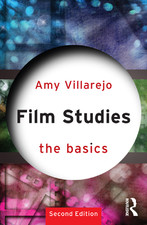Picked Flick #85: High Art
 Extending the happy coincidences, we begin with Lisa Cholodenko's High Art, which itself commences in a literal meditation on how women look—a double-entendre that, like "high art" itself, is fully and richly intentional. During the opening credits sequence, dotted with the names of female actors, editors, cinematographers, costume designers, producers and executive producers, and writer-director Cholodenko, Radha Mithcell's Syd pores over a handful of photographic slides at her light-table. The camera is entranced by her searching, intelligent eyes, starkly framed in thick black glasses, rather than by her body or by the objects at which she gazes. Within the same sequence, though, this isolated woman makes her way home through an empty office building and an uninhabited subway station, all shot from the kinds of oblique angles and the dusky, doomy shadows that tend to signal female victimization in all ranges of popular cinema. The movie prowls somewhere in the spectrum between Screen, the journal, and Scream, the girls-in-peril franchise, and that's hardly the last spectrum whose measure High Art will take. Between still photos and the moving image, between gay and straight, ambition and love, addiction and lucidity, there is sometimes a wide and nervy chasm in this movie, and at other moments nothing more than a pause, a comma, a slide over to the next seat on the couch. As the plot unfolds, High Art's debts to All About Eve become clearer, duplicating the essential scenarios of cunning, camaraderie, idol-slaying, and creative power even as it lures into the light the earlier film's lesbian undertows.
Extending the happy coincidences, we begin with Lisa Cholodenko's High Art, which itself commences in a literal meditation on how women look—a double-entendre that, like "high art" itself, is fully and richly intentional. During the opening credits sequence, dotted with the names of female actors, editors, cinematographers, costume designers, producers and executive producers, and writer-director Cholodenko, Radha Mithcell's Syd pores over a handful of photographic slides at her light-table. The camera is entranced by her searching, intelligent eyes, starkly framed in thick black glasses, rather than by her body or by the objects at which she gazes. Within the same sequence, though, this isolated woman makes her way home through an empty office building and an uninhabited subway station, all shot from the kinds of oblique angles and the dusky, doomy shadows that tend to signal female victimization in all ranges of popular cinema. The movie prowls somewhere in the spectrum between Screen, the journal, and Scream, the girls-in-peril franchise, and that's hardly the last spectrum whose measure High Art will take. Between still photos and the moving image, between gay and straight, ambition and love, addiction and lucidity, there is sometimes a wide and nervy chasm in this movie, and at other moments nothing more than a pause, a comma, a slide over to the next seat on the couch. As the plot unfolds, High Art's debts to All About Eve become clearer, duplicating the essential scenarios of cunning, camaraderie, idol-slaying, and creative power even as it lures into the light the earlier film's lesbian undertows.Like All About Eve, if nowhere near its depth, the script of High Art is good enough that it would survive even a mediocre cast, but thank God it hasn't got one. Ally Sheedy's watchful, forceful game of brinksmanship with her own reckless tendencies never ceases to fascinate, while Patricia Clarkson turns all the burners on high with her soused, semi-waking, gloriously catty, but intimidatingly naked portrait of Greta, an actress whose image is fading away on her. There's a harsh scene, though not a cruel one, where Greta almost drowns in a bathtub, and the rhymes to both the ubiquitous photos of Greta underwater and the elementary process of emulsifying a negative instantly capture how far past her happiness—how overexposed—Greta has become.
High Art errs, more than once. The film makes feints toward two characters, Lucy's mother and Syd's boyfriend, that barely even congeal, and the climax, for all that it captures an emotional inevitability, still feels wayward and abrupt. These are the kinds of limitations you find in a movie that still exists halfway in the filmmaker's head; it hasn't yet molted its basic layers of structure and concept, hasn't yet cooled and matured into full-fledged drama. But as opposed to other good films with similar liabilities—Darren Aronofsky's Pi, Scott McGehee and David Siegel's The Deep End, even to an extent Todd Haynes' Far from Heaven—High Art keeps looping you back into its mysteries. The collective dissolution of the characters, even the dourness of the film's trajectory don't deflate what is enigmatic and interesting about it. When women this fascinating come this close to a camera, no matter what side of it they're standing on, it's always an event. Cholodenko's follow-up, Laurel Canyon, works only sporadically; Cavedweller barely works at all. What's best in those pictures are but paler reflections of the same issues that drive High Art—broadly, what rebellious female artisanship looks like as its embers are dying down. But High Art doesn't snuff itself out. You remember it. (Click here for the full list of Nick's Picked Flicks.)
Labels: 1990s, Ally Sheedy, Favorites, Patricia Clarkson, Queer Cinema

















0 Comments:
Post a Comment
<< Home